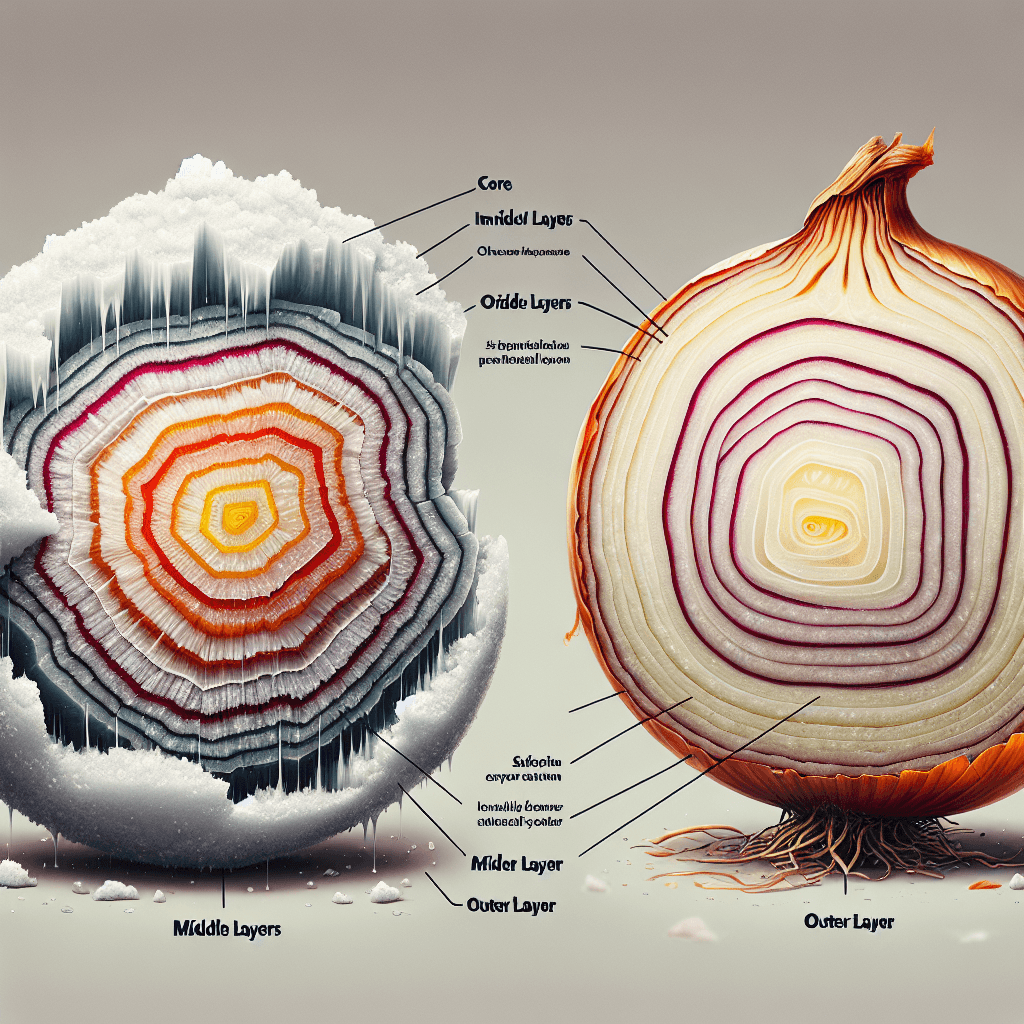Why do large hailstones have layers inside them just like an onion
Those onion-like layers aren't just a strange quirk of nature; they're the frozen diary of a hailstone's violent, rollercoaster journey through the heart of a thunderstorm.


Too Long; Didn't Read
Hailstones get layers by being tossed up and down inside a thunderstorm. Each trip up and down adds a new layer of ice, which looks different depending on the temperature and moisture at that altitude, creating the onion-like rings.
Unpeeling the Mystery: Why Do Large Hailstones Have Layers Inside Them Just Like an Onion?
Have you ever found a large hailstone after a severe storm and wondered what it looked like inside? If you were to carefully cut one open, you wouldn't find a solid, uniform block of ice. Instead, you'd discover a fascinating pattern of concentric rings, with alternating layers of clear and milky-white ice, much like the layers of an onion or the rings of a tree. This intricate structure isn't just a beautiful quirk of nature; it's a detailed diary, recording the hailstone's violent and turbulent journey through the heart of a thunderstorm. This post will peel back those icy layers to reveal the dynamic process that gives hailstones their signature rings.
The Violent Updraft: A Hailstone's Birthplace
Before a hailstone can form its layers, it must first be born. This process begins high up inside a powerful thunderstorm cloud, specifically a cumulonimbus cloud. These clouds are characterized by extremely strong updrafts—currents of warm, moist air rising rapidly into the atmosphere.
The journey starts with a tiny particle, which could be a speck of dust or a frozen water droplet. This particle, known as a "hail embryo," gets swept up by the storm's powerful updraft. As it rises, it enters regions of the cloud where the temperature is well below freezing. Here, it encounters "supercooled" water droplets—water that remains in a liquid state even below its normal freezing point of 32°F (0°C). These droplets freeze onto the embryo, and with that, the hailstone begins its life.
The Rollercoaster Ride: Building the Layers
The secret to a hailstone's layers is its wild, up-and-down journey within the storm cloud. The powerful updraft is not strong enough to hold the growing hailstone forever. Eventually, its weight overcomes the upward force of the wind, and it begins to fall. However, it often gets caught in another updraft and is hurled back up toward the top of the cloud. This rollercoaster-like cycle of rising and falling is what builds the distinct layers.
Each layer tells a story about the part of the cloud it was formed in. The two main types of layers are:
- Clear Ice (Glaze): This forms in the lower, warmer, and wetter parts of the storm cloud. As the hailstone falls through this region, it collides with a high concentration of large, supercooled water droplets. Because the temperature is relatively warm (closer to freezing), the water freezes slowly as it spreads across the hailstone's surface. This slow freezing allows any trapped air bubbles to escape, resulting in a layer of clear, dense ice.
- Opaque Ice (Rime): This forms in the upper, much colder regions of the cloud. When the updraft throws the hailstone back up, it encounters tiny, deeply frozen water droplets and ice crystals. The extreme cold causes these particles to freeze instantly upon contact. This rapid freezing traps countless microscopic air bubbles within the ice, scattering light and giving the layer a milky, opaque, or cloudy appearance.
The hailstone continues this cycle, adding a new layer with each trip up and down through the storm, growing larger and heavier until the updraft can no longer support its weight, and it finally falls to the ground.
Reading the Rings: A Storm's Autobiography
Just as a dendrochronologist can read a tree's rings to learn about past climate conditions, a meteorologist can study a hailstone's layers to understand the storm that created it. The number of distinct layers indicates how many times the hailstone traveled up and down within the cloud. The thickness of each layer can reveal how long it spent in a particular region. A thick layer of clear ice, for example, suggests the hailstone spent a significant amount of time in a moisture-rich area of the storm. By analyzing these icy rings, scientists can gain valuable insights into the storm's structure, updraft speeds, and overall intensity.
Conclusion
So, the next time you see a large hailstone, remember that it's more than just a piece of ice. Its onion-like layers are a frozen record of a chaotic and spectacular journey. Each ring represents a chapter in its life, from its birth as a tiny embryo to its violent ascents and descents through a powerful thunderstorm. The alternation between clear and cloudy ice tells a story of changing altitudes, temperatures, and moisture levels. These natural diaries provide a unique window into the hidden, turbulent world inside a storm cloud, reminding us that even in a simple piece of ice, there is a complex and fascinating story waiting to be discovered.
More Articles

Why do movie punches sound so much crunchier and louder than real ones?
That sickening, bone-crunching punch you hear in the movies is a lie, and the secret ingredient is probably sitting in your refrigerator right now.

What makes a beer bottle suddenly foam over just from a light tap on top?
It’s not magic, it’s a shockwave; discover the explosive physics that turns a gentle tap on your beer bottle into an instant foamy geyser.

Why do police officers touch the back of a car during a traffic stop?
It’s not a random habit; that simple touch is a calculated, old-school tactic designed to leave a crucial and potentially life-saving piece of evidence behind.